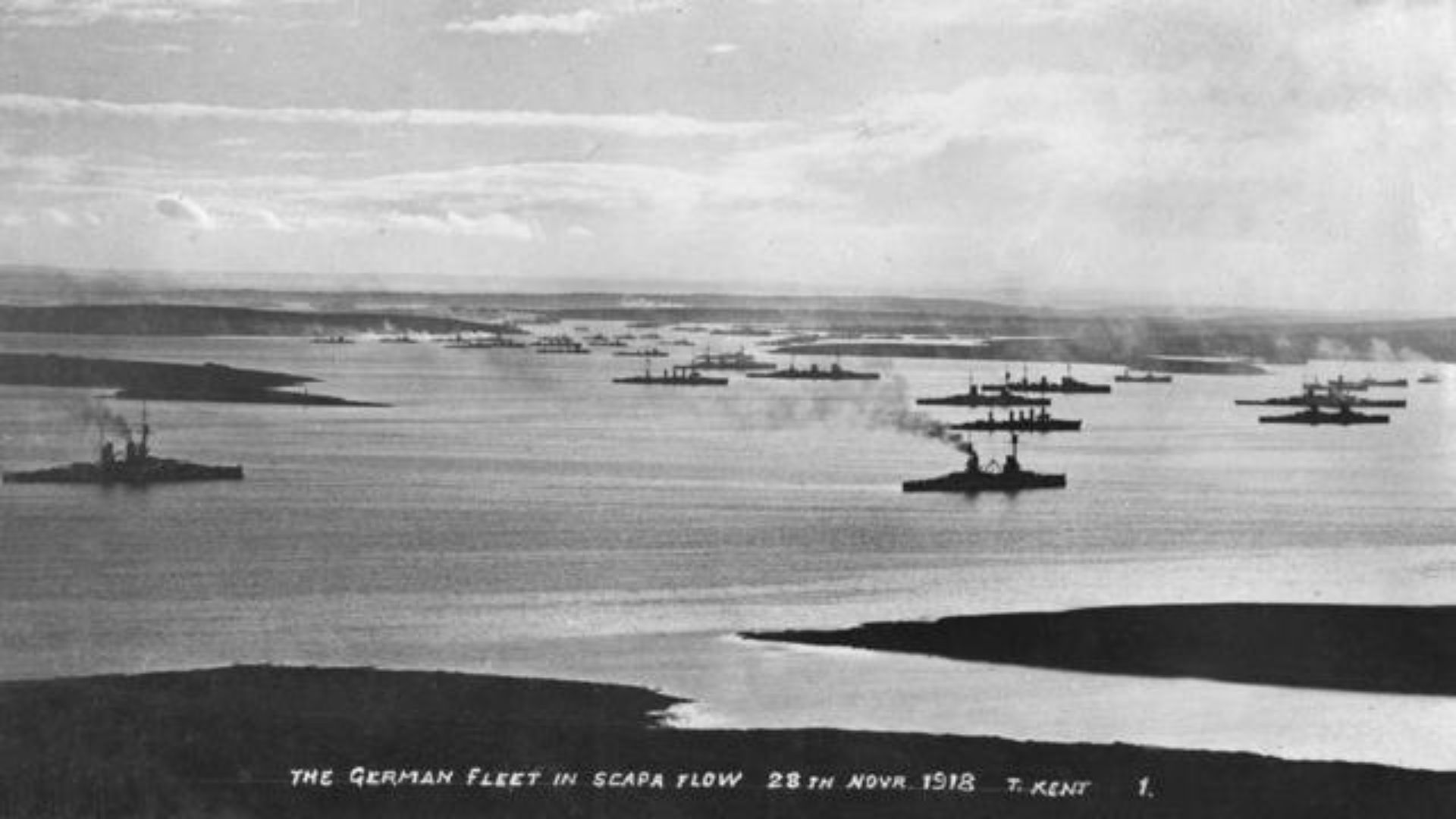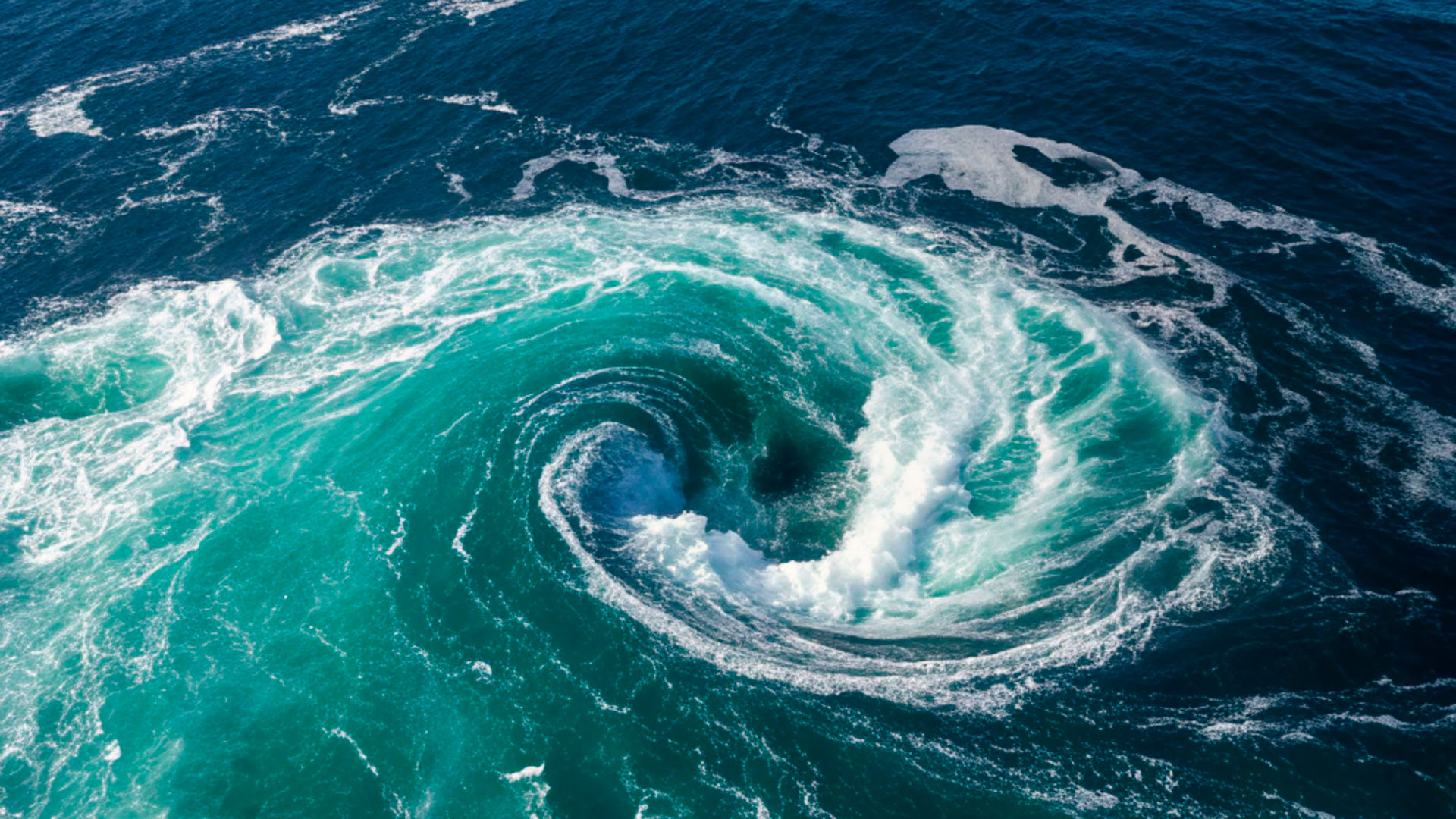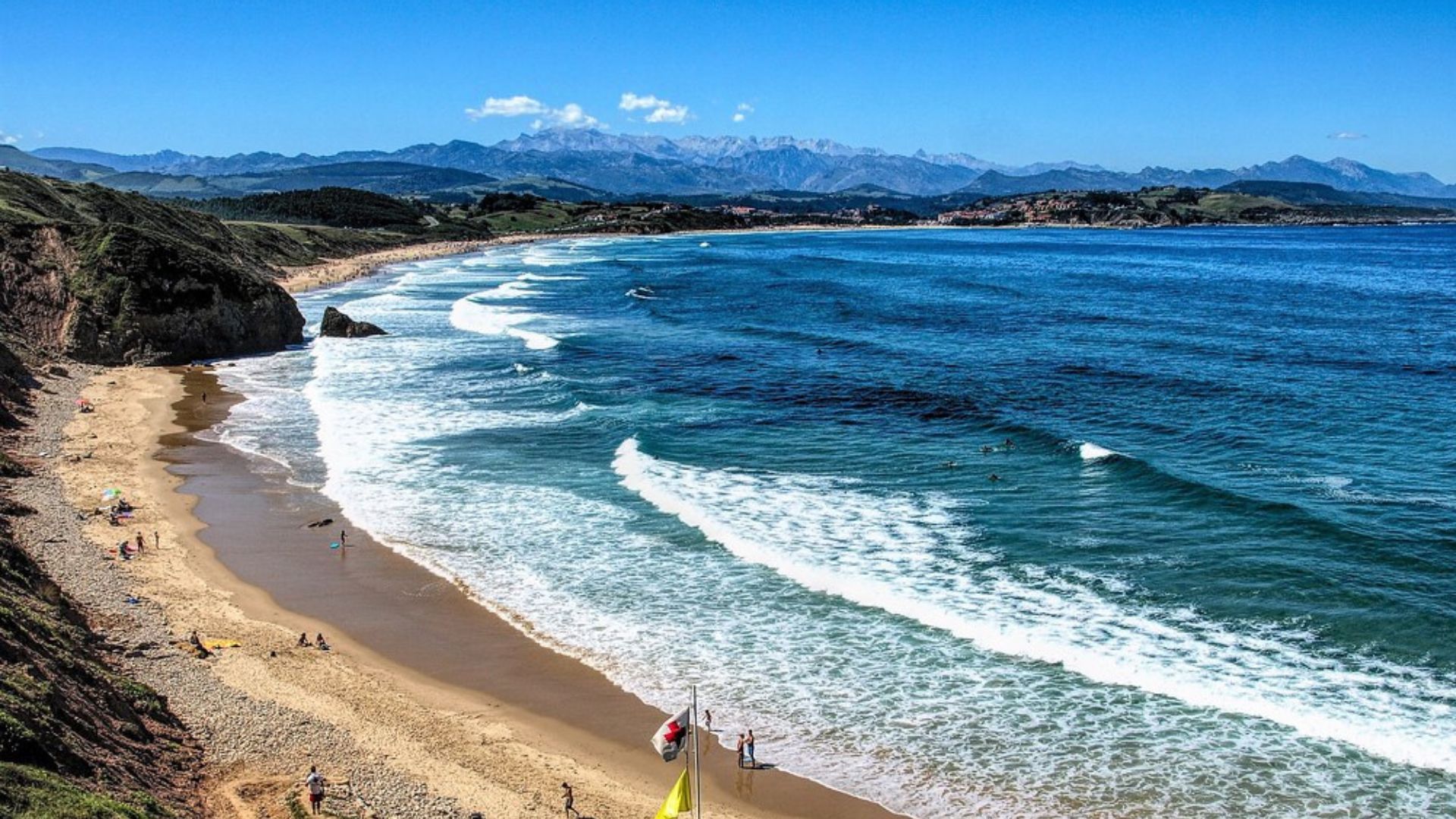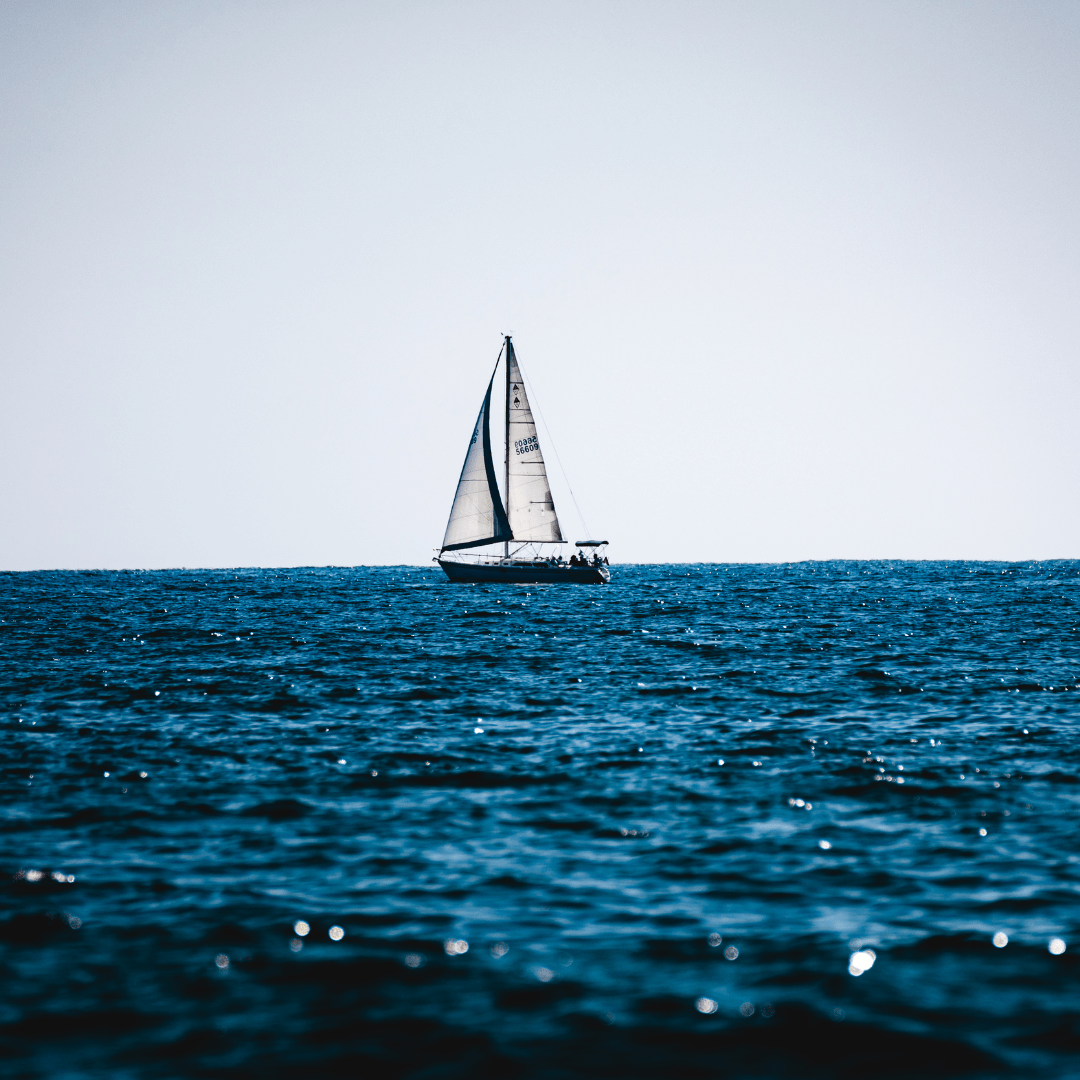
Hidden Coves and Beaches of Spain
If you dream of crystal-clear waters, unspoiled nature, and zero crowds, Spain hides true coastal treasures that don't appear in traditional guides. Whether sailing or hiking along the shore, these hidden beaches and coves offer a unique experience for those looking to disconnect from the world.
We’ll take you from north to south, from the Asturian cliffs to the Mediterranean gems.
Hidden Coves in Spain
1. Cala Llentrisca, Ibiza
Tucked between cliffs and pine forests, Cala Llentrisca is one of the best-kept secrets in southern Ibiza. Unlike other more popular coves on the island, here you won't find beach clubs or electronic music, only the sound of the sea and birdsong. Its untouched surroundings and small size make it a total haven of peace. Ideal for those traveling by boat or for those not afraid of a good hike, it's also one of the best spots for diving in calm, clean waters.
How to get there?
Accessible only by boat or via a hike from Es Cubells.
Features:
- Surrounded by hills and pine forests.
- Rocky seabed, ideal for snorkeling.
- Very calm and sheltered waters.
- No facilities, preserving its virgin character.
Perfect for anchoring and escaping the island’s noise.
2. Cala Estreta, Palamós (Girona)
In the heart of the Costa Brava, Cala Estreta is a clear example of how the Catalan coast still preserves spots untouched by mass tourism. Surrounded by Mediterranean forests, it features a rocky, almost sculptural landscape that blends with the deep blue sea. Its name reflects its narrow and elongated shape, and it is popular among coastal hikers and snorkelers. The absence of services and the fact that it is only accessible on foot ensure an authentic, undisturbed experience.
How to get there?
From Palamós via the coastal path on foot or by boat from the marina.
Features:
- Coarse sand and flat rocks.
- Crystal-clear water with abundant marine life.
- No buildings or services.
- Very quiet, even in high season.
An ideal spot for those seeking privacy on the Costa Brava.
3. Cala de Enmedio, Almería
Located within the Cabo de Gata-Níjar Natural Park, this cove looks like a movie set. Its wind-carved rocks, white sand, and calm waters make it an oasis in the arid Almerian landscape. Cala de Enmedio is perfect for relaxing, snorkeling, or simply staring at the horizon undisturbed. There are no signs or paved paths, only raw nature, so visitors must come prepared and respectful of the protected environment.
How to get there?
On foot from Agua Amarga or by boat from Carboneras or Las Negras.
Features:
- Fine white sand and volcanic rock formations.
- Turquoise water, ideal for anchoring.
- Protected area within the Natural Park.
- No services available.
A Mediterranean postcard setting, perfect for photos and total relaxation.
4. Cala Fonda – Waikiki (Tarragona, Catalonia)
Better known as Waikiki, Cala Fonda could easily be mistaken for a Pacific beach thanks to its exotic appearance and lush surroundings. Located within La Marquesa forest, access is only on foot, limiting crowds and preserving its untouched charm. With golden sand and gentle waves, it’s a nudist-friendly beach where freedom and respect prevail. High cliffs and pine forests offer natural shade, making it a perfect place to read, meditate, or simply enjoy the silence.
How to get there?
Walking from Playa Larga in Tarragona (about 30 minutes).
Features:
- Spectacular cliffside surroundings.
- Sand and small pebbles.
- Ideal for anchoring with great underwater visibility.
- No services, completely natural.
One of the best coves on the Catalan Mediterranean coast for those seeking total disconnection.
5. Cala del Barronal (Cabo de Gata, Almería)
A hidden gem between two of the most famous beaches in the Cabo de Gata Natural Park: Mónsul and Genoveses. Cala del Barronal goes unnoticed by many tourists due to its more challenging access, making it a true treasure for the more adventurous. Its golden sand, clean waters, and volcanic setting are perfect for those looking for something different, far from the crowds. Here you’ll find authenticity in a timeless setting, with no noise, no signal, no rush.
How to get there?
On foot using ropes or by boat from Adamas or Provatas (Milos Island).
Features:
- Small cove between cliffs.
- Golden sand and crystal-clear water.
- Great snorkeling spot.
- Zero crowds.
A hidden gem for those who love hiking between volcanic nature and the sea.
Hidden Beaches in Spain
1. Gulpiyuri Beach (Asturias)
One of the most curious hidden beaches in Europe, Gulpiyuri Beach isn’t next to the sea, but in the middle of a green meadow. How is that possible? The sea filters through an underground cave and fills this tiny natural pool, barely 40 meters wide. Its rural setting and inland location make for a unique experience. Although it's not suitable for long swims, it's perfect for a quick stop to marvel at nature’s wonders.
How to get there?
On foot from the village of Naves (Llanes).
Features:
- Inland beach just 40 meters wide.
- Water comes through an underground cave.
- Declared a Natural Monument.
A unique geological phenomenon in Europe. Perfect for photo trips.
2. Playa del Silencio (Asturias)
Quite simply, one of the most beautiful hidden beaches on the Cantabrian coast. Playa del Silencio appears at the end of a steep path as a breathtaking reward. Its tall cliffs shield it from the wind, and its semicircular shape creates a natural amphitheater. The atmosphere is usually very respectful, with visitors seeking peace and stunning landscapes. The water is crystal-clear, but there are no services, so come prepared. Ideal for sitting on the rocks and quietly watching the waves roll in.
How to get there?
From Castañeras via a steep path.
Features:
- Huge crescent-shaped cliff.
- Sand and pebbles.
- No bars or buildings, just nature.
A visual spectacle that lives up to its name.
3. Playa de los Genoveses (Almería)
Wide, bright, and unbuilt, Playa de los Genoveses offers one of the most beautiful postcards of southern Spain. It’s a beach for walking, family fun, and peaceful swimming, thanks to its soft sand and safe seabed. Named after a Genoese fleet landing during the Middle Ages, its natural surroundings with hills and dunes make it perfect for those seeking authenticity. It’s highly valued by photographers, kayakers, and hikers exploring the Cabo de Gata coastline.
How to get there?
From San José (Níjar), by dirt road or on foot.
Features:
- Wide beach with fine sand and clear waters.
- Surrounded by dunes and Mediterranean vegetation.
- Protected area, no beach bars or umbrellas.
Perfect for families and soft water sports like paddle surfing.
4. Playa de Trece (Galicia)
Near the Corrubedo Natural Park, this wild beach seems untouched by time. Playa de Trece is wide, windy, and almost always empty, even in summer. It’s the kind of place that captivates those who cherish solitude by the sea. The landscape’s contrasts—white dunes, Atlantic vegetation, and shifting skies—make it a hypnotic spot for hiking, photography, or simply feeling the vastness of the ocean with no one else around.
How to get there?
On foot from Santa Uxía de Ribeira, in the Corrubedo Natural Park.
Features:
- >Very isolated, even in summer.
- White sand and dunes.
- Rough sea, not suitable for swimming without caution.
A paradise for hikers and nature photographers.
Tips for Discovering Hidden Beaches and Coves
Before setting off to explore these coastal gems, it's essential to plan your route in advance. Some coves are only accessible by sea, while others require hikes through rugged paths or remote stretches. Make sure to bring everything you need: water, some food, sun protection, and good footwear. Many of these beaches lack services, and that’s part of their charm.
Also, respecting the environment is key to keeping these spots pristine. Don’t leave trash, disturb vegetation, or bother local wildlife. If you're going by boat or planning water activities, check sea and wind conditions beforehand. Exploring these places responsibly not only ensures your safety but also preserves their beauty for future visitors.
Exploring Spain’s hidden beaches and coves is an invitation to rediscover the coast from a more intimate, mindful perspective. Far from tourist crowds, these spots offer raw nature, postcard landscapes, and a direct connection with the sea. Whether through a boat trip or a cliffside hike, each destination holds a unique experience worth enjoying with respect, curiosity, and the desire to disconnect from the everyday.













_v2.svg)
_v2.svg)









_v2.svg)


